By Christopher Miskimon
The strength of the British Empire lay in its colonies. Together, they formed a vast trade network which gave the United Kingdom a decided advantage in military ability, finance, and commerce. When used in synchronized effort, this system could bring enormous power to bear on any opponent. This was a strength the British had used for decades to maintain and expand their control over their empire and prevent the rise of competitors.
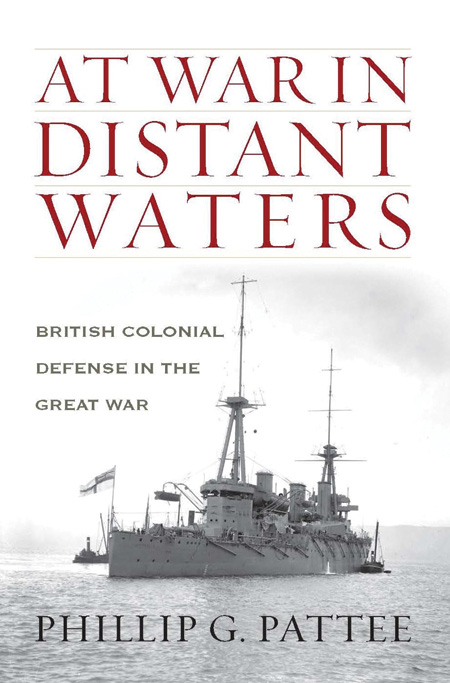 Before World War I, Great Britain controlled 50 percent of the world’s shipping tonnage and 80 percent of the international communications network, comprising telegraph lines and the then new technology of radio. Also, the world’s merchants obtained necessary credit and bought insurance in the exchanges of London. England truly was the superpower of the era.
Before World War I, Great Britain controlled 50 percent of the world’s shipping tonnage and 80 percent of the international communications network, comprising telegraph lines and the then new technology of radio. Also, the world’s merchants obtained necessary credit and bought insurance in the exchanges of London. England truly was the superpower of the era.
By 1914, an opponent had risen to challenge this supremacy. Germany, ambitious and eager, had its own plans for a rise to preeminence. Knowing a war with Great Britain was possible, Germany made preparations. It possessed a small empire of its own, colonies scattered throughout Africa and the Pacific Ocean.
These holdings prepared for war by creating a support network for commerce raiders, both regular warships and converted merchantmen. Ordnance was stockpiled to arm these civilian ships upon a war’s outbreak. Telegraph and radio stations were established to improve the coordination of the fleet. A number of support vessels were designated to provide the commerce raiders with fuel and provisions. Germany recognized the trade routes connecting the British Empire were a weak spot to be exploited during a conflict. The Kaiser’s government also knew the Royal Navy would blockade Germany from the outset, so its raiders would need this external network for their survival.
Likewise, the British knew the threat posed by the German Navy and planned for the reduction of that threat. At War in Distant Waters: British Colonial Defense in the Great War (Phillip G. Pattee, Naval Institute Press, Annapolis, MD, 2013, 288 pp., maps, notes, bibliography, index, $59.95, hardcover) reveals how Great Britain studied the problem, decided on a course of action, prepared itself, and when the time came, acted to eliminate this peril to trade, the lifeblood of the empire.
The defense of its trade routes had begun centuries earlier for the British and was ingrained to the point it was really second nature for the government. A vast network of overseas bases was created to defend these routes and allowed the British to quickly respond to threats. Since the bulk of worldwide telegraph and radio infrastructures were in British hands, they were well placed to hinder telegraph communications of opposing nations to a great degree. By design, the Royal Navy was to be as large as the next two navies combined. However, that navy had three responsibilities: defend the home islands, protect colonies. and safeguard trade, requiring it to disperse.
The Germans knew the threat all this posed to their desires and built a fleet large enough to be an effective rival. German foreign policy first acquired then prepared its colonies in much the same way Britain did so it could challenge the British on a global scale. German strategy called for keeping the bulk of the fleet at home to pose a threat to England while having enough cruisers and commerce raiders abroad to damage British commerce. Since the United Kingdom controlled most of the telegraph network, radio stations were set up to coordinate the raiding effort. All in all, the similarity of situations for each country in terms of its colonies meant both could anticipate the other’s likely movements and attempt to counter them.
When war came, however, Germany quickly found itself outmatched. The British coordinated efforts with various Dominion nations and colonies to nullify German colonies and bases. In some cases this meant outright occupation. In others, raids to destroy facilities and radio transmitters sufficed. A few attacks were averted by local German governors, who agreed to essentially proclaim neutrality. With the German fleet bottled up, there was almost no way to provide aid or reinforcements, allowing Britain to deal with each in turn. While several German raiders were able to tally impressive numbers of merchant seizures, all were eventually run down and sunk or chased into neutral harbors to be interned. Raiders using neutral harbors were likewise attacked by furious British efforts to force the neutral nations to take action. As a consequence, Germany abandoned the raider concept and began using submarines to strangle Britain.
Pattee’s book concentrates mainly on the strategic levels of British planning and action in defense of the empire. One might fear a book on this subject, written by a scholar, would be stuffy and dense, fit only to impress other scholars. This work is impressively researched and well written with an easy to follow narrative. The author makes his points clearly and supports them with reasonable evidence. He is able to pull together a worldwide effort and show its interrelation in the bigger picture of World War I.
 Neither Victor Nor Vanquished: America in the War of 1812, William Weber, Potomac Books, Washington, D.C., 2013, 241 pp., maps, notes, index, $27.50, hardcover.
Neither Victor Nor Vanquished: America in the War of 1812, William Weber, Potomac Books, Washington, D.C., 2013, 241 pp., maps, notes, index, $27.50, hardcover.
We are in the middle of the 200th anniversary of the War of 1812, a conflict that still engenders discourse about its conduct. Parts of the war appear as a comedy of errors and poor planning, while other events are marked by acts of valor and daring conduct. With both good and bad, it was a formative experience for the young United States.
The war is examined here from several new angles, attempting to provide a fresh take. Each of the first four chapters examines a different aspect of the war. This includes assessments of the effect of the war on America’s development, a new look at the performance of the American military, and a review of the governors, who largely prosecuted the war instead of the weak and nascent federal government.
The rest of the book is devoted to what-if scenarios exploring how things may have happened if certain key events turned out differently. Chapters look at the Battle of Bladensburg, how America might have evolved if the war had never happened, and other circumstances. Overall, the book is informative and succeeds in its goal of showing a new perspective on the War of 1812.
Searching for George Gordon Meade, The Forgotten Victor of Gettysburg, Tom Huntington, Stackpole Books, Mechanicsburg, PA, 2013, 406 pp., maps, photographs, notes, index, $32.95, hardcover.
American Civil War Union General George Gordon Meade’s name is known to most history students, but often their knowledge of him largely stops there. Others have supplanted him in fame: Robert E. Lee, Ulysses S. Grant, Thomas J. “Stonewall” Jackson, and William T. Sherman all went on to fame in the annals of American military history, while Meade has mostly languished in posterity. The author of this biography challenges that assumption, stating Meade was an important player in the war’s prosecution, who was pushed aside by more flamboyant leaders or men who simply came after him. Before the Battle of Gettysburg, Meade fought in many major battles and campaigns. He took command of the Union Army three days before that critical battle took place. At the strategic town in Pennsylvania, he defeated the Army of Northern Virginia, which by then had an impressive record. Afterward, he went on to command the Army of the Potomac until Appomattox, though Grant exceeded him in fame. His contributions are many, but he is largely unrecognized.
The author asserts that Meade suffered in reputation because Lee’s army did make its escape from Gettysburg. Also, Meade was a temperamental man and his hostility toward the press and some politicians was returned. Grant’s rise, while not intended to hurt Meade, did so nonetheless. In a break from a straightforward biography, the author describes his travels in creating his book, meetings he had with various Civil War buffs, such as those who belong to the General Meade Society of Philadelphia, and other stories of his pilgrimage to understand one of the American Civil War’s important generals.
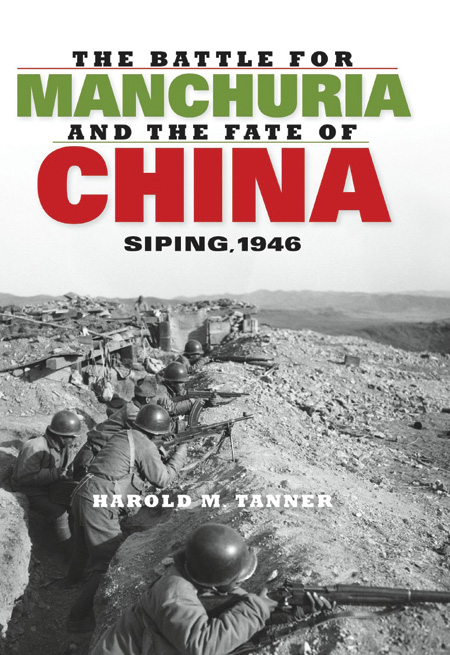 The Battle for Manchuria and the Fate of China: Spring, 1946, Harold M. Tanner, Indiana University Press, Indianapolis, 2013, 266 pp., maps, photographs, notes, index, $35.00, hardcover.
The Battle for Manchuria and the Fate of China: Spring, 1946, Harold M. Tanner, Indiana University Press, Indianapolis, 2013, 266 pp., maps, photographs, notes, index, $35.00, hardcover.
China has been a battleground nation for centuries, ranging from foreign interventions like the Opium Wars to internal struggles such as the Taiping Rebellion. Most Westerners are generally familiar with the Chinese Civil War, which raged in the years following World War II. However, the details of that struggle are often untold and generalized largely because the names, place, and geography of China are unfamiliar. This book seeks to reveal some of the details of a war that did much to shape the modern world.
After World War II ended, Manchuria became a literal chess board as various factions pursued different goals. The nationalist and communist Chinese, who had mostly put aside their fight to combat the Japanese, now began to vie for the future of China. Soviet occupation forces added their agenda to the mix. Finally American special representative George C. Marshall, the general who planned American victory in World War II, arrived to broker a cease fire between the communists and nationalists. While his efforts were ultimately successful in achieving a temporary cessation of hostilities, the prospect of true peace and cooperation between the two sides was nil.
While Marshall worked toward peace, the Chinese fought through spring and early summer 1946. Most of the book concentrates on the fighting around the city of Siping in Central Manchuria. After recounting the battle, the author considers the what-ifs of the situation, evaluating the effects the Siping fight on the rest of the war and how things might have evolved had the outcome of the battle been different.
 Fatal Rivalry: Flodden 1513, Henry VIII, James IV and the Battle for Renaissance Britain, George Goodwin, W.W. Norton and Co., New York, 2013, 288 pp., maps, illustrations, notes, bibliography, index, $29.95, hardcover.
Fatal Rivalry: Flodden 1513, Henry VIII, James IV and the Battle for Renaissance Britain, George Goodwin, W.W. Norton and Co., New York, 2013, 288 pp., maps, illustrations, notes, bibliography, index, $29.95, hardcover.
One of England’s greatest battles took place on September 9, 1513, when British forces commanded by Thomas Howard, Earl of Surrey, took on an invading Scottish army under their own King James IV. Relations between the two countries had been difficult for centuries; occasional treaties of friendship were always temporary.
This time war came due to Scotland’s alliance with France. King Henry VIII invaded France on June 30, 1513, and King Louis XII called upon Scotland to honor its obligation to come to France’s aid. James IV complied and invaded England in August with an army of 42,000. With Henry in France, his wife Catherine of Aragon acted as regent and set into motion a defense. An army of 26.000 Englishmen led by Surrey rushed north to meet the Scots. In September they met at Flodden. The Scottish were defeated, and James IV lay dead on the field. It was a resounding victory for the English, securing their northern flank.
As with most situations of the period, there was extensive political maneuvering along with diplomatic exchanges and plotting by various rulers and members of the nobility. The author works through these complexities to show how all of this affected the eventual outcome. This book is rich in detail and written to make the subject readily understood by modern readers. Fewer books on Renaissance warfare are published these days; this book is a welcome addition, and its publication commemorates the recent 500th anniversary of the battle.
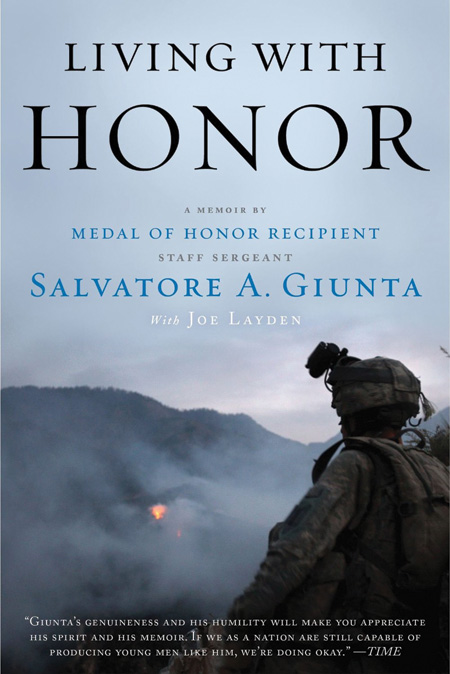 Living With Honor: A Memoir by Medal of Honor Recipient Staff Sergeant Salvatore A. Giunta, Salvatore Giunta with Joe Layden, Threshold Editions, Simon & Schuster, New York, 2013, 291 pp., photographs, $16.00, softcover.
Living With Honor: A Memoir by Medal of Honor Recipient Staff Sergeant Salvatore A. Giunta, Salvatore Giunta with Joe Layden, Threshold Editions, Simon & Schuster, New York, 2013, 291 pp., photographs, $16.00, softcover.
The United States has always been blessed to gain the written word of a large number of its veterans. The nation’s above average literacy rate means common soldiers are able to share their experiences of war in the first person rather than just anecdotal stories shared in the writings of the officer class. This is so common in America now that most citizens simply take it for granted. The wars in Iraq and Afghanistan have and are producing their share of these memoirs. Compared to earlier conflicts, these struggles have produced relatively few awards of the U.S. military’s higher medals, particularly the Medal of Honor. This book presents the story of one of those soldiers.
Staff Sergeant Salvatore A. Giunta followed a common path into the army; he wandered into a recruiting office during a free T-shirt giveaway, got intrigued, and enlisted a week later. He became a paratrooper in the 173rd Airborne Brigade and soon found himself serving in Afghanistan. Ambushed by Taliban fighters, his squad was decimated. The squad leader was wounded, and Giunta fought his way to him to give aid. He continued fighting even after being wounded. Giunta also saved another wounded soldier as insurgents tried dragging the helpless man away.
While Giunta was awarded the Medal of Honor for his actions that day, the book covers much more of his life and military service. Giunta tries to impart the relatively normal nature of his life and his rejection of the notion he is a hero, stating he did nothing other soldiers would not have done in his place.
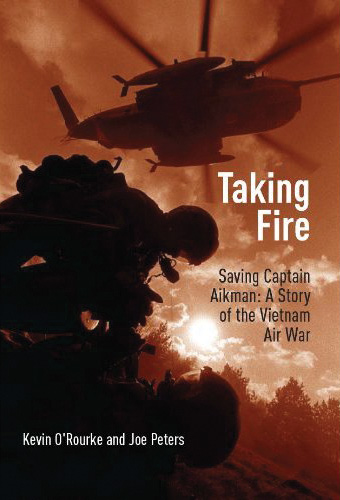 Taking Fire: Saving Captain Aikman, A Story of the Vietnam Air War, Kevin O’Rourke and Joe Peters, Casemate Publishers, Havertown, PA, 2013, 216 pp., photographs, glossary, $32.95, hardcover.
Taking Fire: Saving Captain Aikman, A Story of the Vietnam Air War, Kevin O’Rourke and Joe Peters, Casemate Publishers, Havertown, PA, 2013, 216 pp., photographs, glossary, $32.95, hardcover.
On June 27, 1972, Captain Lynn Aikman flew his McDonnell Douglas F4 Phantom aircraft on a bombing mission over North Vietnam. After dropping his payload on a truck repair depot, he turned his plane for home. On the way he was attacked and shot down by an enemy MiG fighter. Both Aikman and his backseater, Tom Hanton, managed to eject, but their ordeal was just beginning. Hanton landed near a village and was soon a prisoner. Aikman was injured during the ejection but landed far enough away to have a chance at escape if help could get there in time. That help arrived in the form of a U.S. Air Force pararescue jumper named Chuck McGrath. As McGrath prepared to pull Aikman to safety, enemy fire hit the rescue helicopter’s hoist, and the two men were trapped on the ground. A desperate gamble was undertaken to save the two men.
While the book focuses on this one daring mission to save Aikman, it also tells the story of the Air Force pararescue service, a group that even today receives little attention or recognition for its efforts to rescue downed aviators. It is a small community working at great risk to give aircrew the confidence that if downed every effort will be made to bring them home. The authors extensively cover the rescue jumpers themselves, showing how they come into the Air Force and then join this elite group. Those interested in air combat or Vietnam will enjoy this book, which is full of rich technical detail.
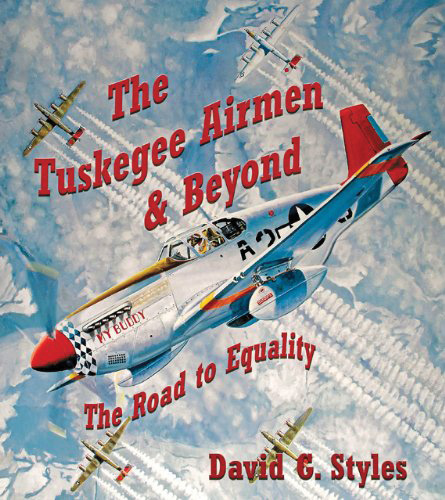 The Tuskegee Airmen and Beyond: The Road to Equality, David G. Styles, Dalton Watson/Quayside Books, Minneapolis, MN, 2013, 304 pp., photographs, appendices, index, $45.00, hardcover.
The Tuskegee Airmen and Beyond: The Road to Equality, David G. Styles, Dalton Watson/Quayside Books, Minneapolis, MN, 2013, 304 pp., photographs, appendices, index, $45.00, hardcover.
The Tuskegee Airmen are perhaps the best known group of black soldiers in American military history. Like many servicemen of their race, acknowledgment of their efforts has come late. Fortunately for many of them, that recognition arrived while they were still alive to receive it. Thousands of their comrades across American history were not so lucky, beginning with African Americans who fought in the Revolutionary War and in every conflict since. This book tells the story of African Americans in military service throughout U.S. history with a particular focus on the Tuskegee Airmen.
The first four chapters of the book are devoted to the early history of African American soldiers from the Revolution through World War I. The next five chapters focus on the rise of black aviators, the Tuskegee Airmen and others in World War II. The remaining chapters highlight the post-1945 experience, desegregation of the military and the struggle for real equality for African American service members. Their fight to rise to the highest ranks of the military is also chronicled. The final chapter addresses the efforts of African Americans in the space program.
Short Bursts
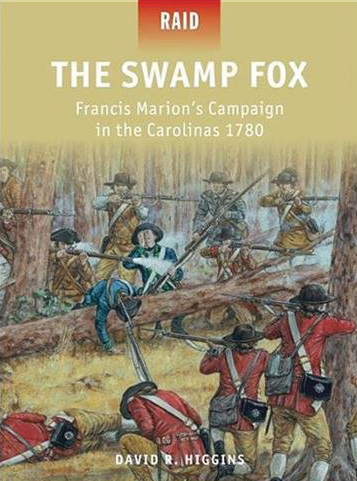 The Swamp Fox—Francis Marion’s Campaign in the Carolinas 1780, David Higgins, Osprey Publishing, 2013, 80 pp., $18.95, softcover. This is a summary of Francis Marion’s guerrilla war during the American Revolution. His efforts spurred a harsh British reaction, which turned sentiment against them in the American South.
The Swamp Fox—Francis Marion’s Campaign in the Carolinas 1780, David Higgins, Osprey Publishing, 2013, 80 pp., $18.95, softcover. This is a summary of Francis Marion’s guerrilla war during the American Revolution. His efforts spurred a harsh British reaction, which turned sentiment against them in the American South.
British Infantryman Versus Zulu Warrior Anglo-Zulu War 1879, Ian Knight, Osprey Publishing, 2013, 80 pp., $18.95, softcover. This is part of a new series comparing the combatants on two sides of a conflict. This volume compares the training, tactics, and effectiveness of the two opponents in the Zulu War.
The Western Front Companion: The Complete Guide to How the Armies Fought for Four Devastating Years, 1914-1918, Mark Adkin, Stackpole Books, 2013, 528 pp., $69.95, hardcover. This extensive reference work is devoted to all the armies that fought on the Western Front. Information on uniforms, tactics, weaponry, and orders of battle are included.
Boneyard Nose Art: U.S. Military Aircraft Markings and Artwork, Nick Veronico, Stackpole Books, 2013, 208 pp., $36.95, softcover. A photographic work dedicated to the nose art of aircraft retired to the famous “boneyards” of obsolete warplanes in the American southwest, this book includes planes from World War II to the Gulf Wars and is designed for historians, modelers, and aviation buffs.
Thank You for Your Service, David Finkel, Sarah Crichton Books, 2013, 256 pp., $26.00, hardcover. A sequel to the author’s The Good Soldiers, where he was embedded with a U.S. Army unit during the troop surge in Iraq, this book covers the experiences of the soldiers and their families after their return to the United States.
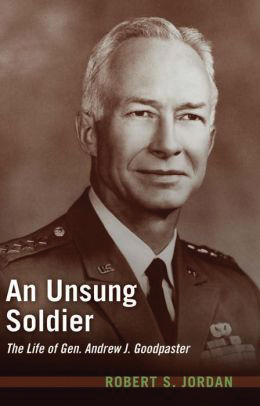 An Unsung Soldier: The Life of General Andrew J. Goodpaster, Robert S. Jordan, Naval Institute Press, 2013, 240 pp., $40.95, hardcover. This is a biography of an American officer who served in the higher circles of the U.S. defense community and NATO during the early years of the Cold War. After retiring, he was called back to duty to fix West Point after an ethics-related scandal.
An Unsung Soldier: The Life of General Andrew J. Goodpaster, Robert S. Jordan, Naval Institute Press, 2013, 240 pp., $40.95, hardcover. This is a biography of an American officer who served in the higher circles of the U.S. defense community and NATO during the early years of the Cold War. After retiring, he was called back to duty to fix West Point after an ethics-related scandal.
Custer’s Road to Disaster: The Path to Little Bighorn, Kevin M. Sullivan, Twodot Press, 2013, 212 pp., $16.95, softcover. This book is a brief biography of George A. Custer, highlighting the major events that molded the man. The author assesses how these formative experiences led to Custer’s eventual fate.
Pushing the Limits: The Remarkable Life and Times of Vice Adm. Allan Rockwell McCann, USN, Carl Lavo, Naval Institute Press, 2013, 272 pp., $44.95, hardcover. Allan Rockwell McCann began his career in submarines but rose to command the battleship USS Iowa, served in various important staff positions, and was aboard the first submarine to navigate under the polar ice.
American Heroes on the Homefront: The Hearts of Heroes, Oliver North and Bob Hamer, Simon & Schuster, 2013, 244 pp., $30.00 hardcover. A companion piece to Oliver North’s television series covering veterans and their families, each chapter of this book focuses on a different veteran and their family, including those whose loved one did not return.
Losing Vietnam: How America Abandoned Southeast Asia, Ira A. Hunt Jr., University Press of Kentucky, 2013, 399 pp., $40.00, hardcover. After the United States withdrew from Vietnam, the American government began to cut funding for the support of South Vietnam and Cambodia. This book reveals how this action helped doom Southeast Asia in its fight against communism.
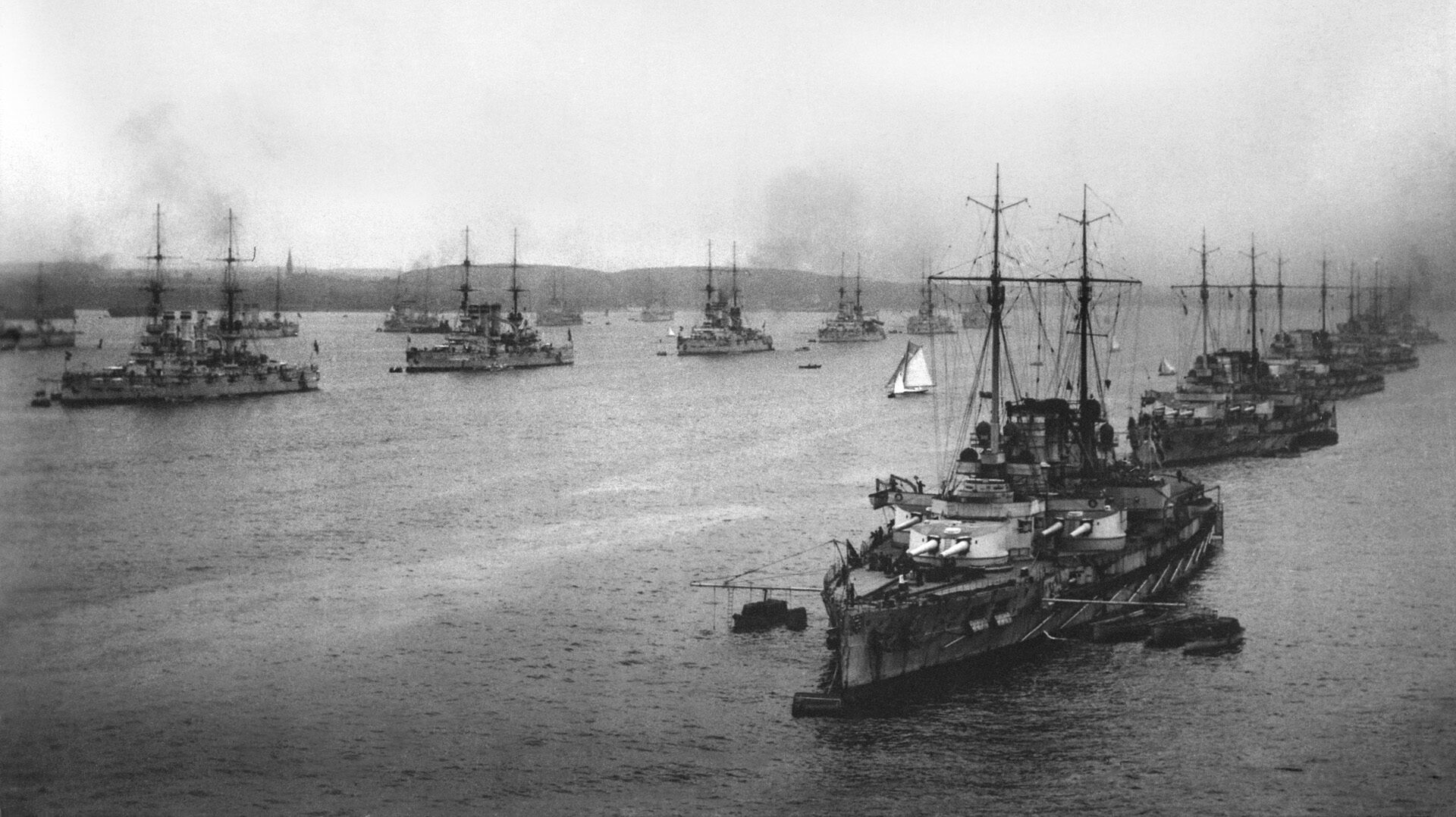
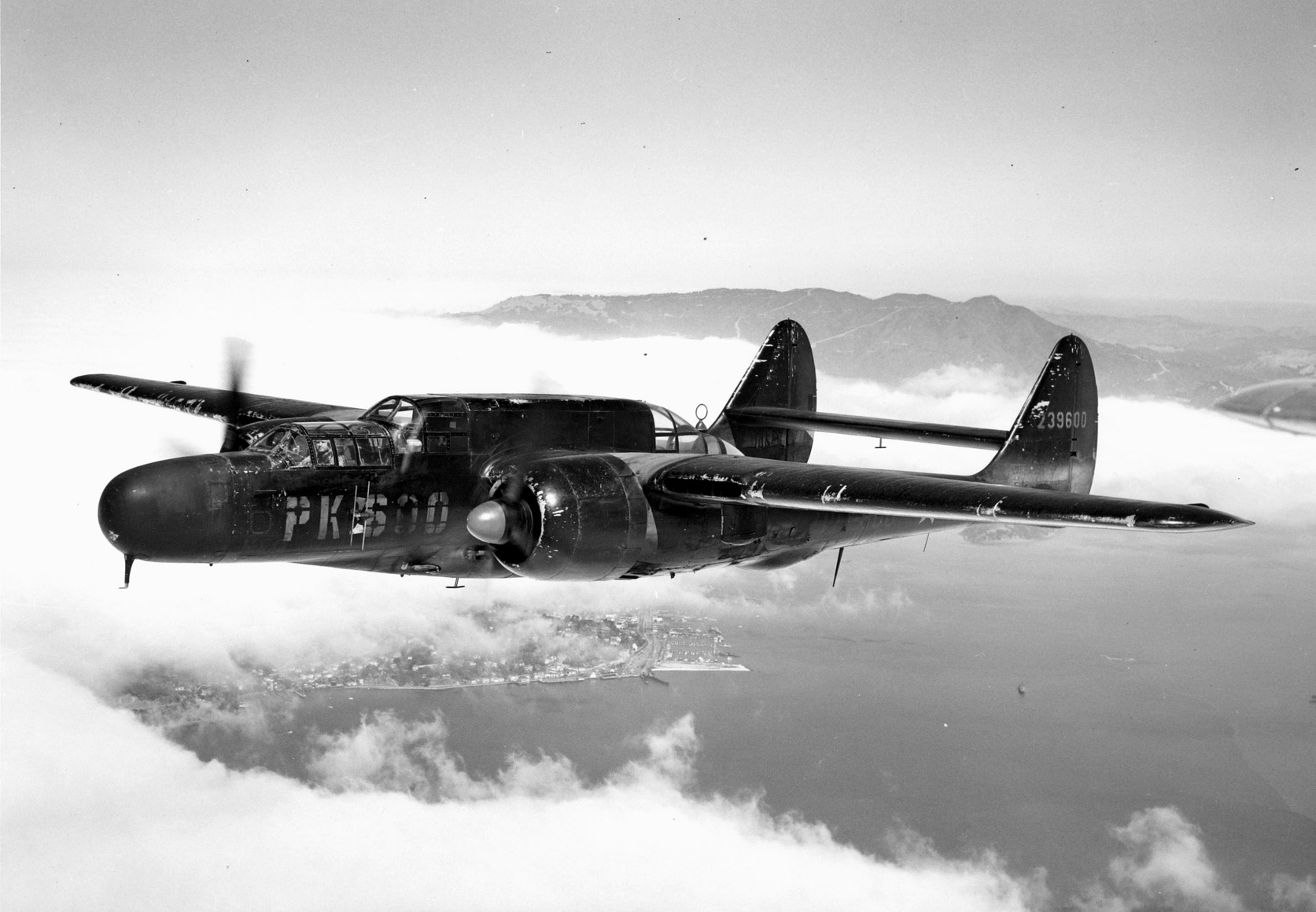
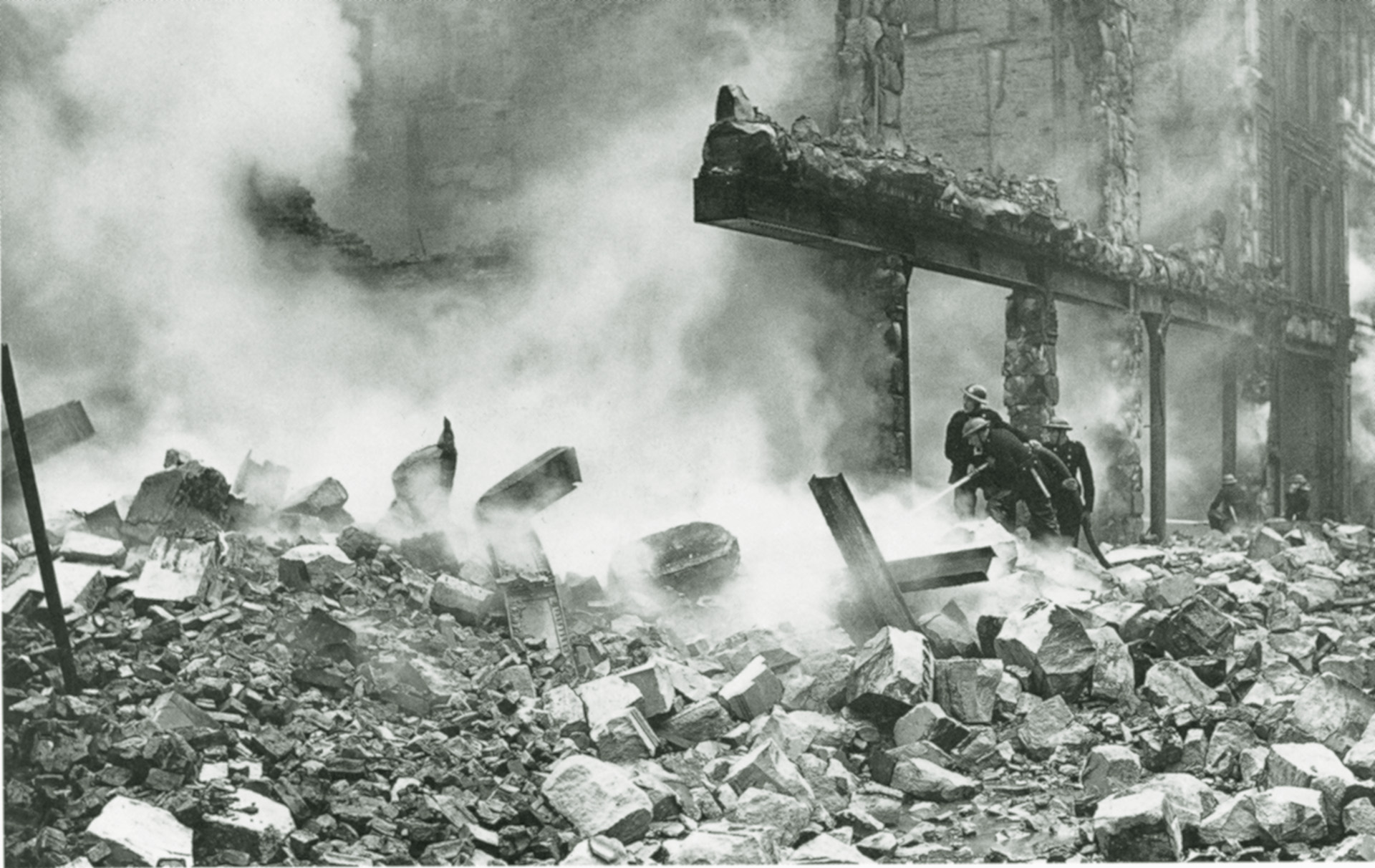
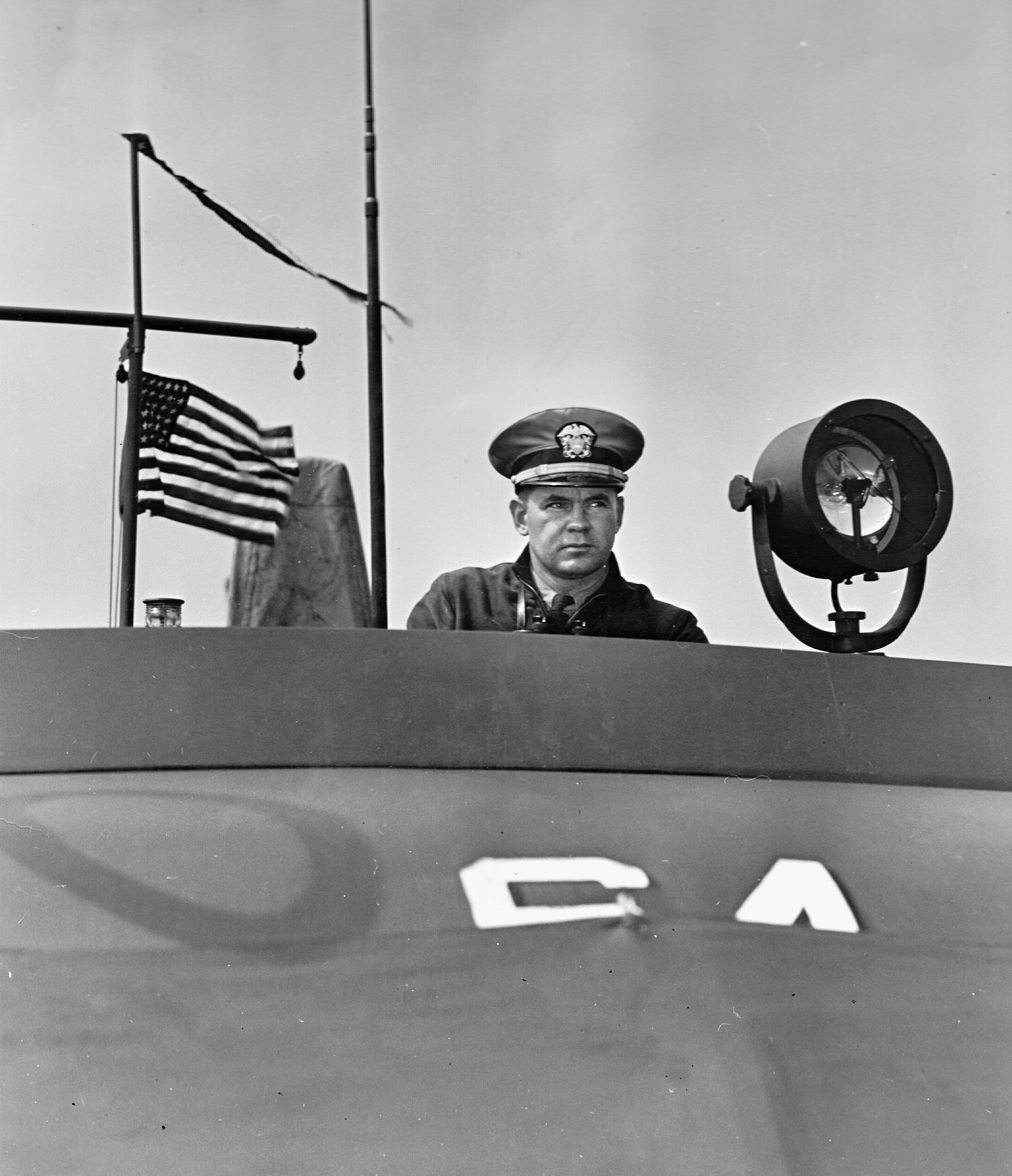
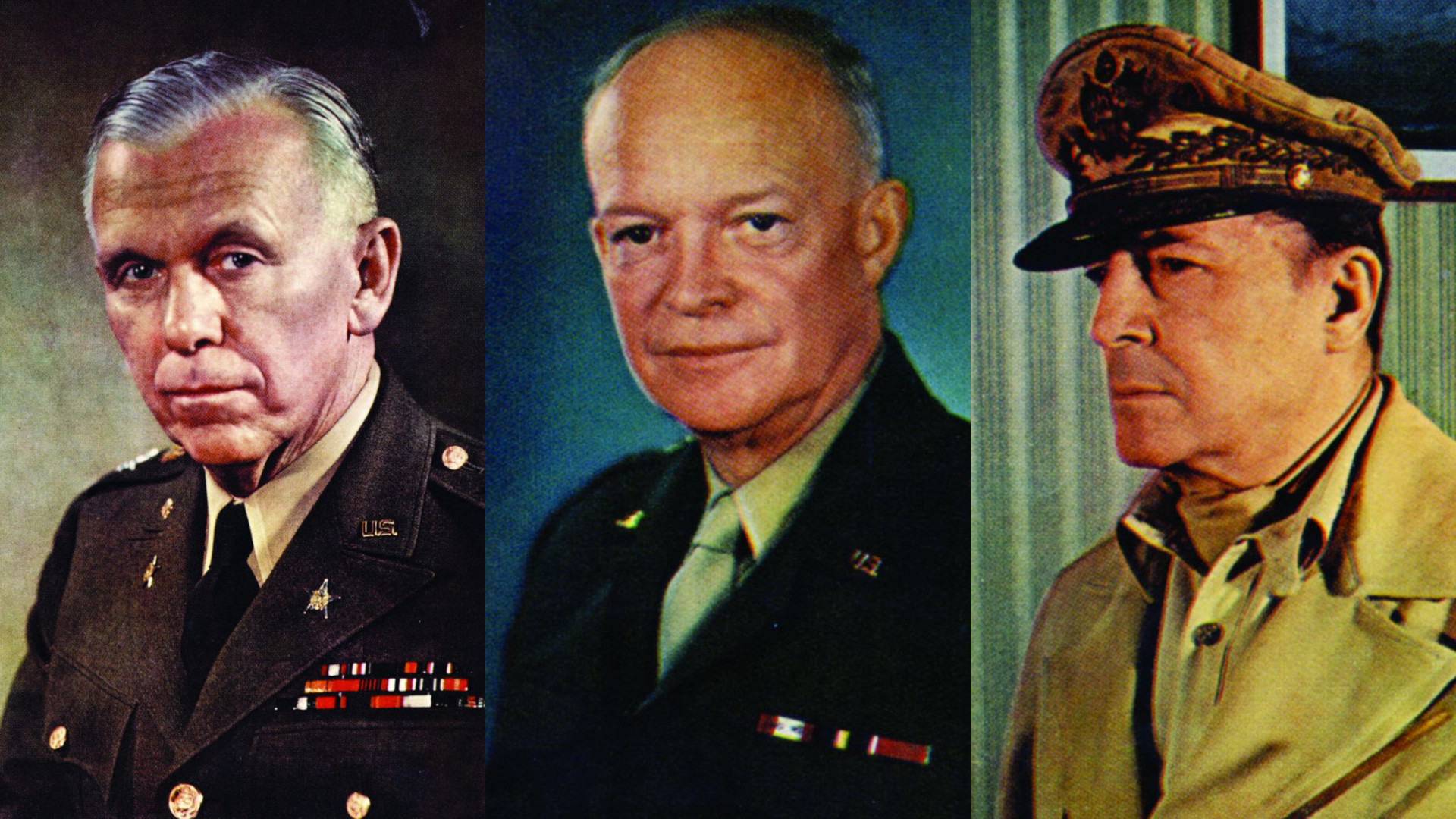
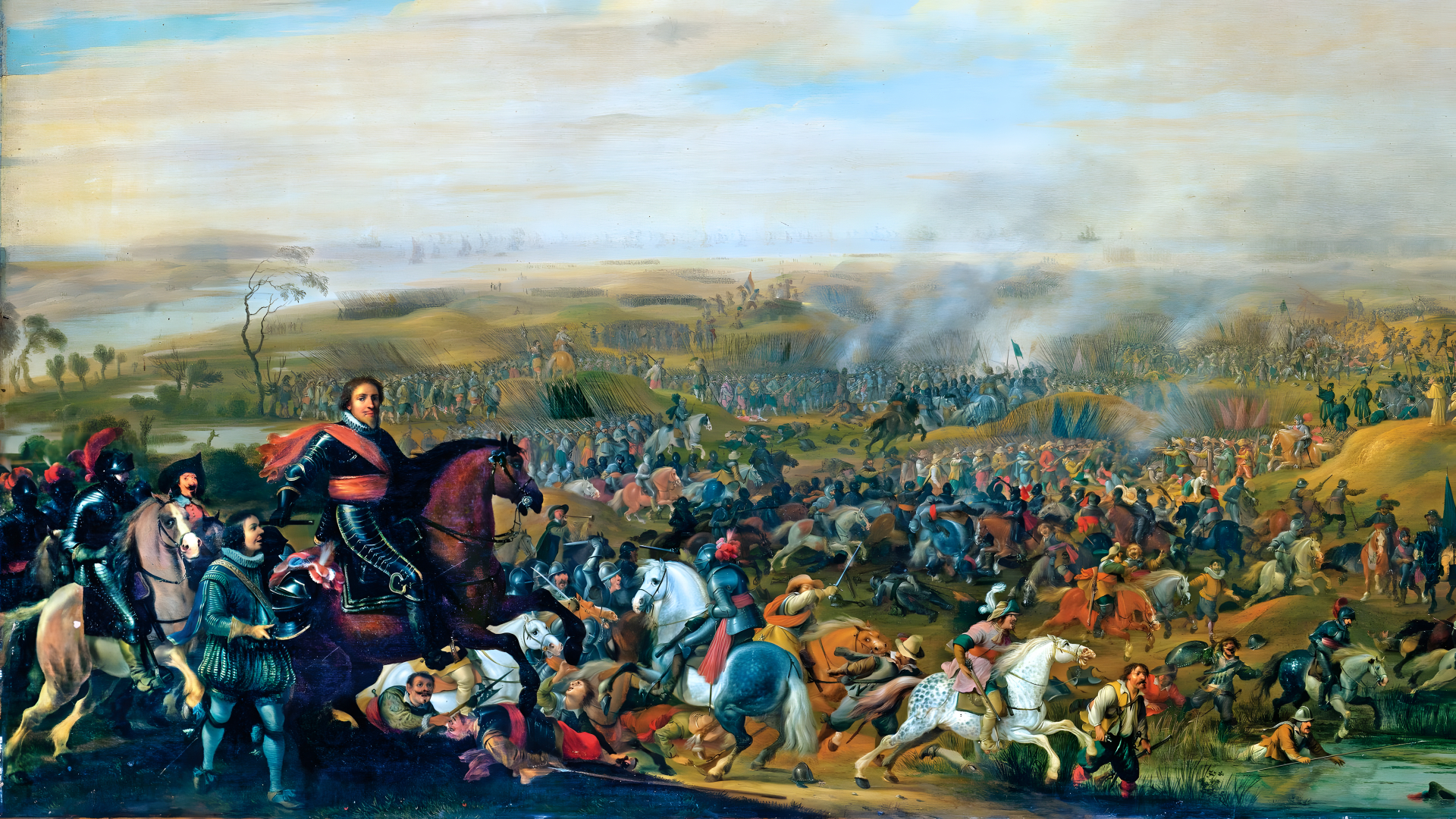
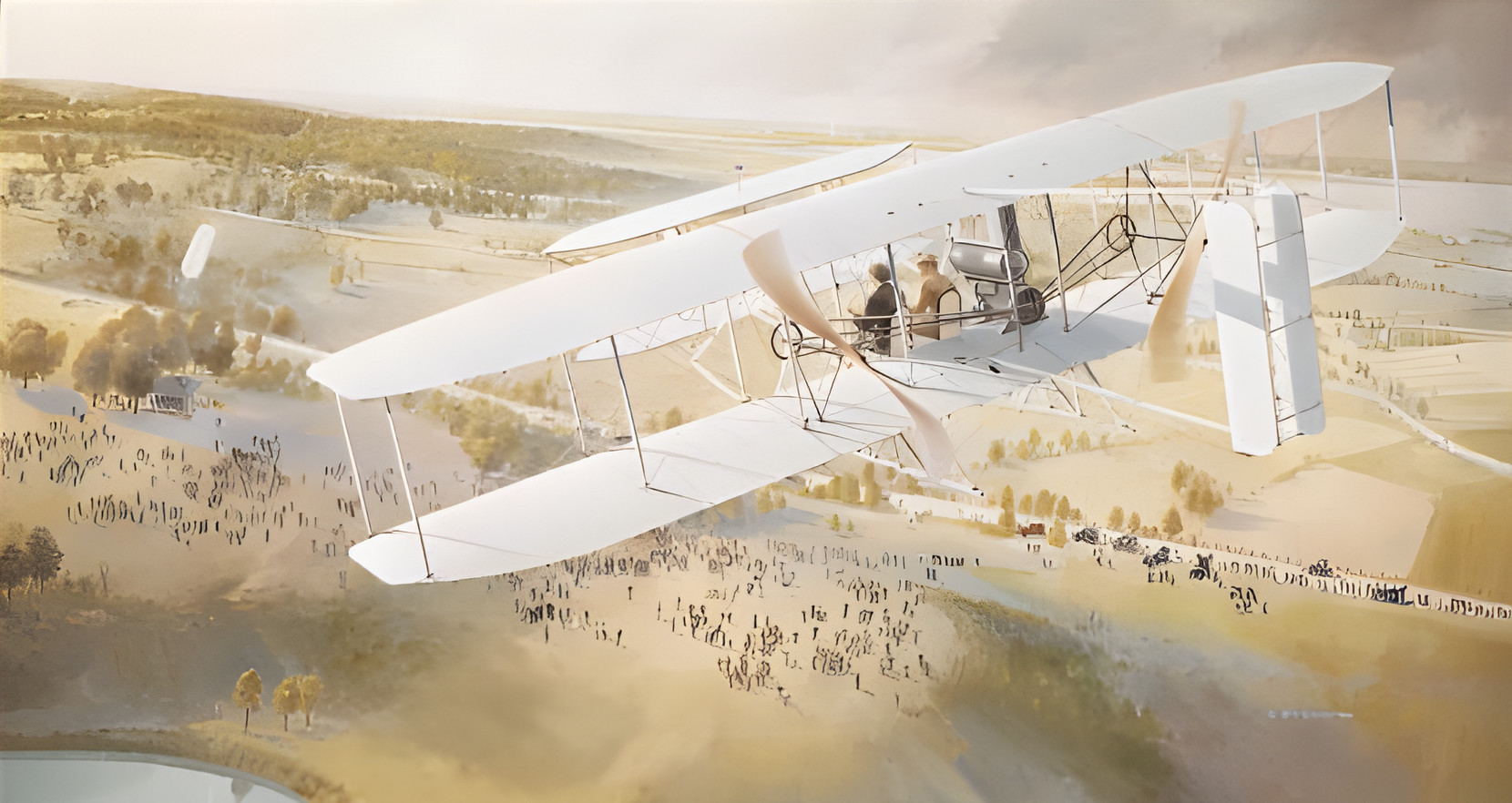
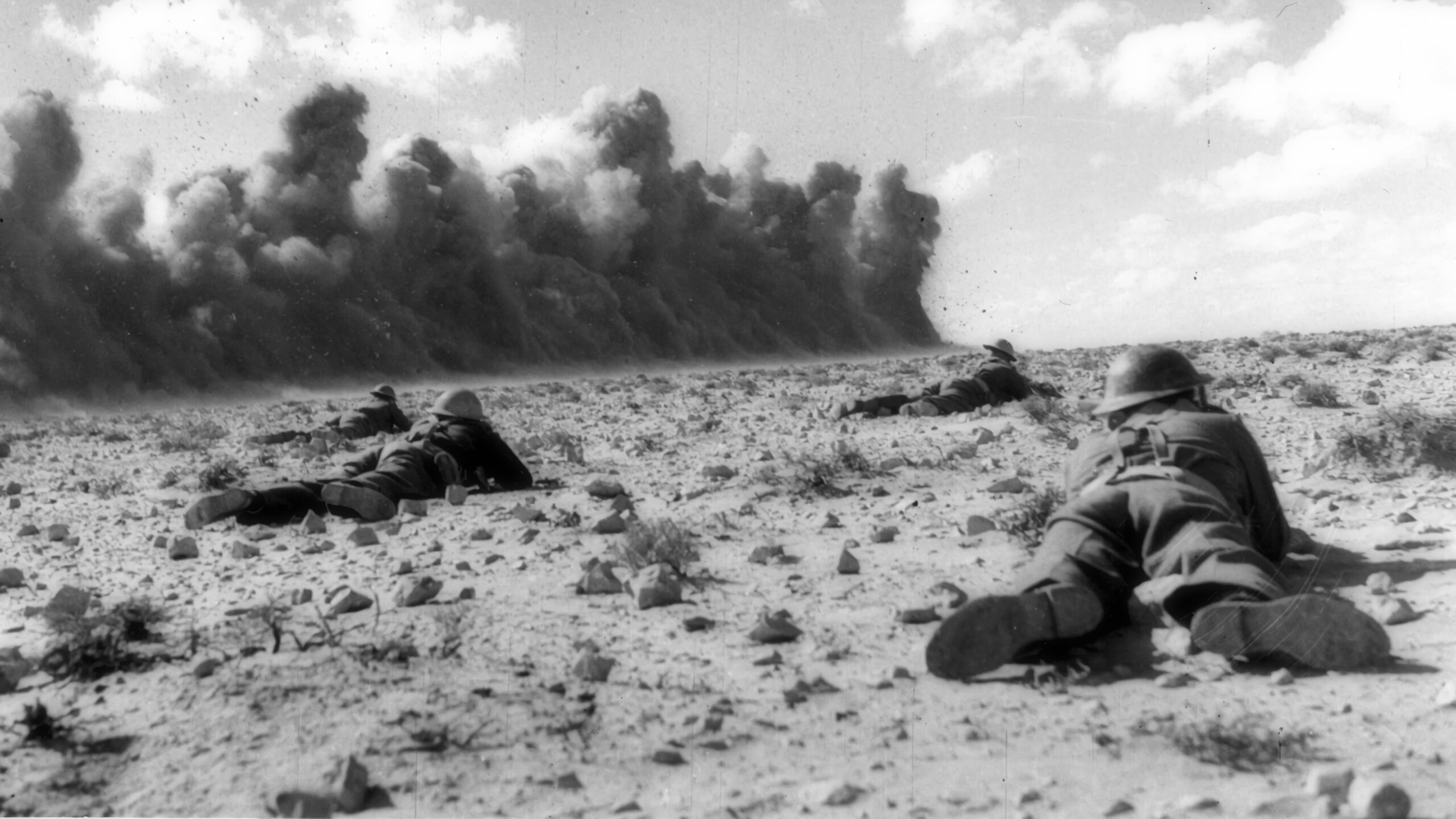
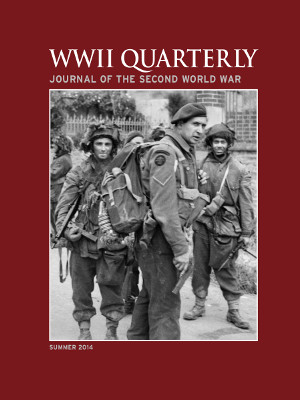
Join The Conversation
Comments
View All Comments